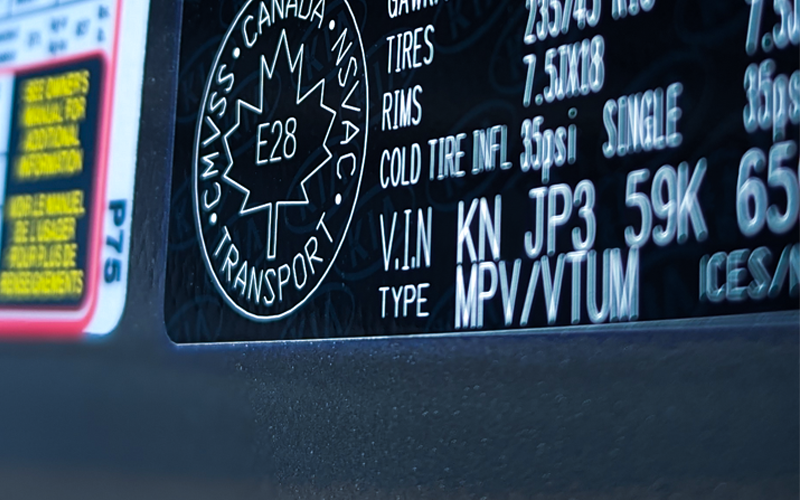Every single used car is completely unique. Though there are many of the exact same model, each vehicle’s history is different – just like the owners of the vehicle. This is one of the reasons why VINs exist and why each one is important when you’re buying or selling a used car.
What is a VIN (Vehicle Identification Number)?
Your vehicle’s VIN is what sets it apart from other vehicles and it includes important information about the appearance of your car as well as its origins. It is a 17-character alpha numeric code that is specific to each and every vehicle on the road. VINs are unique to each vehicle and are never shared, which is how CARFAX Canada is able to compile relevant information about the vehicle’s history, including prior accidents, outstanding liens, registration and branding information and more.
Why is the VIN important?
There are many reasons why a VIN is so important. For instance, it creates the ability to have unique and trackable history for every vehicle. Much like a driver’s license or a passport, the VIN acts as an ID for the vehicle, so any prior accidents, service history, recalls, or anything else that occurs in the vehicle’s lifespan, gets associated to the VIN. On top of that, it’s used when registering your vehicle, getting insurance, and in other important steps to completing a sale of a car. A VIN is the vehicle’s identity.
How do I find the VIN on my vehicle?
The VIN can be found on the vehicle’s dashboard, looking in from the windshield on the driver’s side. On many vehicles it can also be located on the door jamb/post and inside the driver’s side door (where it latches). The VIN also appears on documents such as the vehicle ownership, insurance documents and service records. If you do not have direct access to the vehicle, ask the seller to provide it for you.
Decoding the VIN's characters
The number and letter codes used in each VIN do in fact mean something and the various combinations identify the manufacturer as well as the make, model and year. Here’s a look at how you can read a VIN:

Beyond that, as mentioned previously, with the VIN you can use it to unlock key details about your vehicle. CARFAX Canada has a free VIN decoder that you can use to check your VIN and see information about your vehicle.
What if the VIN is not 17 characters long?
Vehicles with VINs shorter than 17 digits, in most cases, were manufactured prior to 1981 and will not decode. This means that CARFAX Canada will not be able to identify the year, make and model for the vehicle.
How can I verify my VIN?
You should check each of the VIN locations on your car to make sure the number is the same in each place. Look at these areas and examine them for signs of tampering – check for loose rivets, scratched numbers, mismatched rivets, screws in place of rivets, or tape, glue or paint over the VIN area. Match this number to the number found on the vehicle’s original vehicle registration form (not a photocopy) and check that this form also has the correct year, model, make and colour. Lastly, you can use CARFAX Canada’s free VIN decoder to reveal the vehicle’s characteristics. You can compare these results to the actual vehicle and the ownership to see if they all match up.




